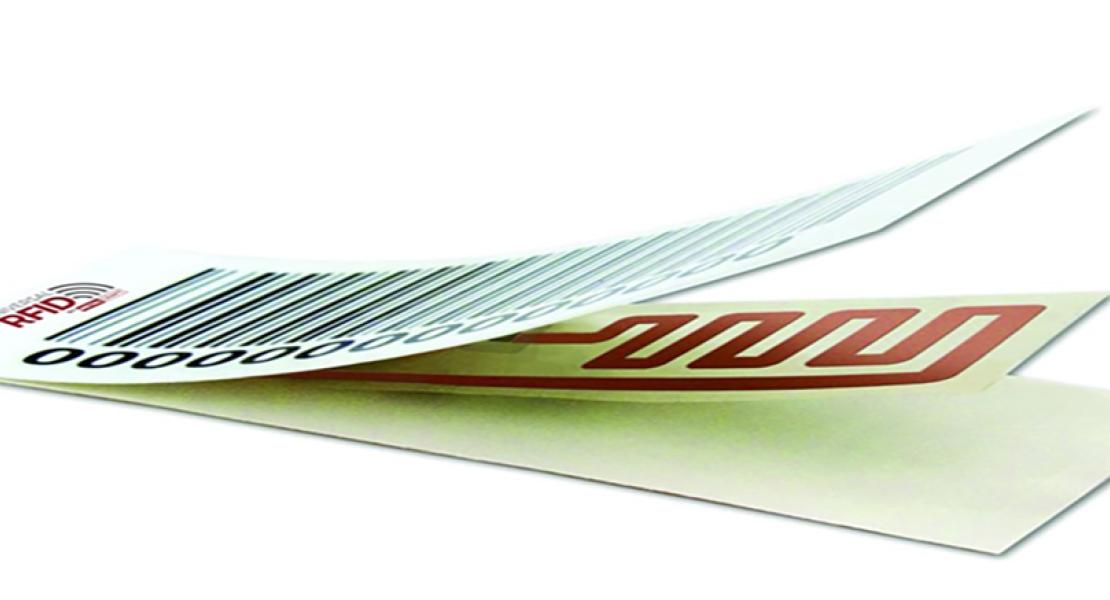There are lots of different types of RFID tags (See Understanding the Different Types of RFID Tags) but a question we often answer is what makes up a RFID label? In this blog we attempt to answer this question and highlight the most common types of constructions we see for a passive RFID tag.
Passive RFID Tag & Label Parts
Most passive RFID tags are usually made of a few different parts:
- The inlay (a microchip/antenna /polyester film combination)
- a white polyester film that forms the body of the tag
- a clear polyester label face substrate
These labels are commonly coated with an adhesive that is used to adhere to objects they are tracking. RFID tags also come without adhesive and can be attached as a hanging type tag or even applied through different types of mechanical fasteners.
The Integrated Circuit- Heart of RFID Tag
The microchip (also called an IC or integrated circuit) is the heart of the RFID label. This microchip contains programmed information including the unique identification number and other information the label buyer desires.
Additionally, the tag can be programmed to contain the commands that control the operation of the chip itself including its operation as a passive or an active tag with operational frequencies to match.
The Inlay
A tiny aluminum antenna is robotically soldered or “strapped” to the circuit to complete the inlay, rfid.averydennison.com/en/home/resource-center/faqs.htm but, in some applications, the antenna is printed with metallic ink on a thin substrate and placed over the circuit to make a connection.
Subsequently, the inlay, the functional portion of the RFID label, rests in or on a substrate as a dry inlay, or if adhesive is added, a wet inlay and is usually covered with what is conventionally called a “label”.
The Finished Label
The RFID label may bear the company’s logo, the product number in readable form, or whatever the label customer wants. Some businesses require color and holographics, combining eye grabbing logos or designs that are perfect for events like concerts or seminars.
On some labels, an additional plus is the ability to add customer programming that can be matched to printed barcode information.
Finally, the form of the tag takes shape when the label, the inlay and its substrates are encased with polymers selected for specific applications. Some RFID labels must withstand high temperatures, some must be resistant to abrasion, some must be waterproof depending upon the application or project.
The finished tag, too, might be layered with a strong adhesive on the reverse to adhere to a customer’s assets. Often, these adhesives have tamper-evident properties.
After fabrication, the multiple labels on the sheet or roll must be cut and separated. As the composite passes through the press-like machine, its dies, lasers or razor cuts through with as many different shapes and layers as needed to meet customer demand and object requirements.
Our RFID tags and labels are designed with durability and reusability in mind. Quality materials, innovation and years of expertise enable repeated label usage.
If you are thinking about a RFID project or would like to find out more about our RFID tags and labels, please email us at [email protected] or give us a call at 1-800-437-5283.
 | About the Author: Julia DeetsJulia Deets joined Metalcraft in 1999 as the Marketing/New Product Director. Julia has held numerous roles during her career with Metalcraft, all related to marketing and customer support. Her current position is as the VP of Marketing and Customer Experience. She has both an undergrad and a Master's degree in Organizational Communications from Northwest Missouri State University and the University of Northern Iowa, respectively. |




